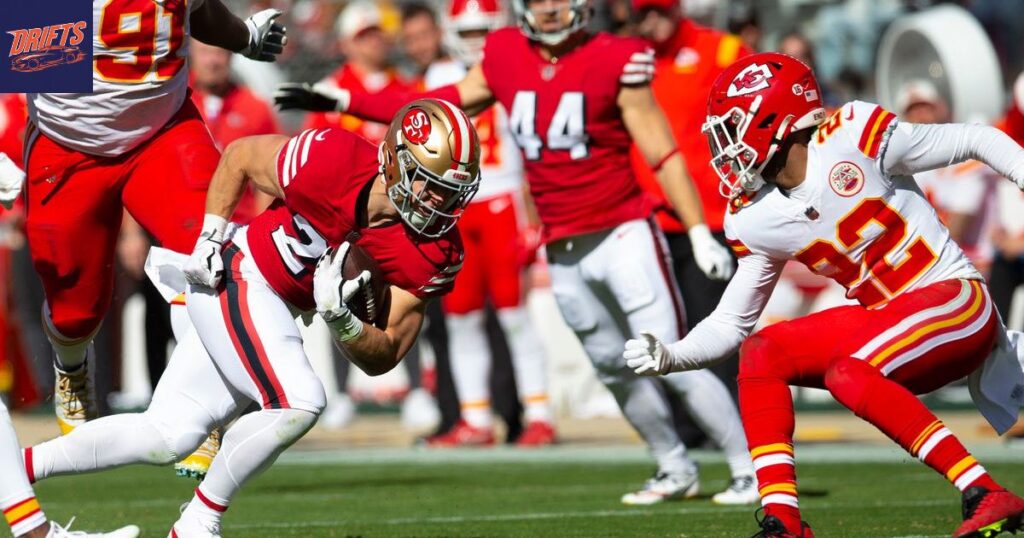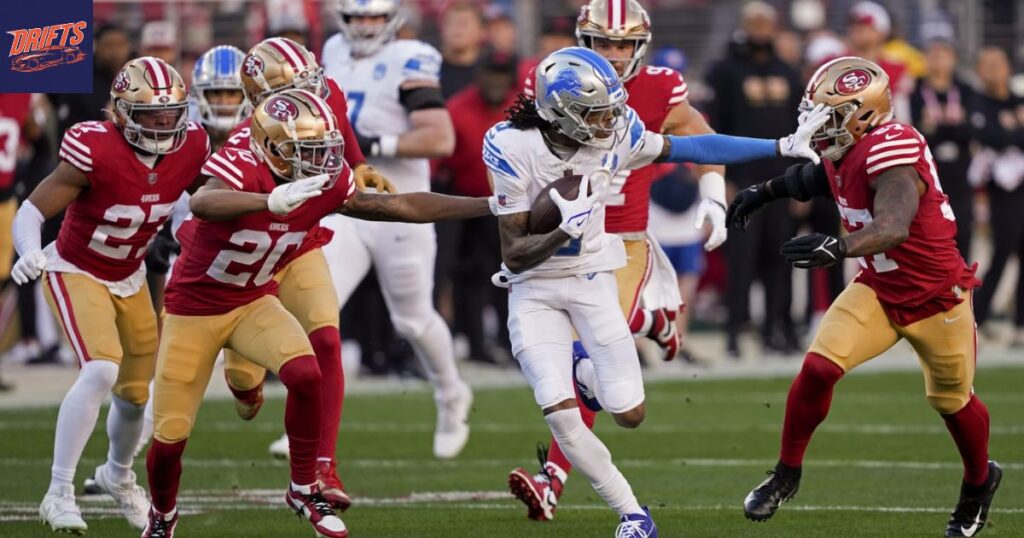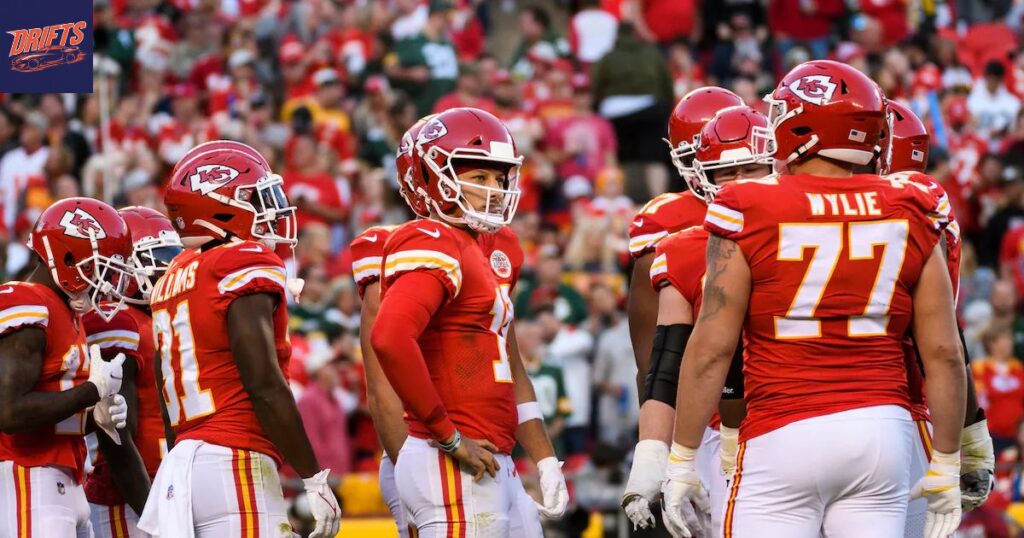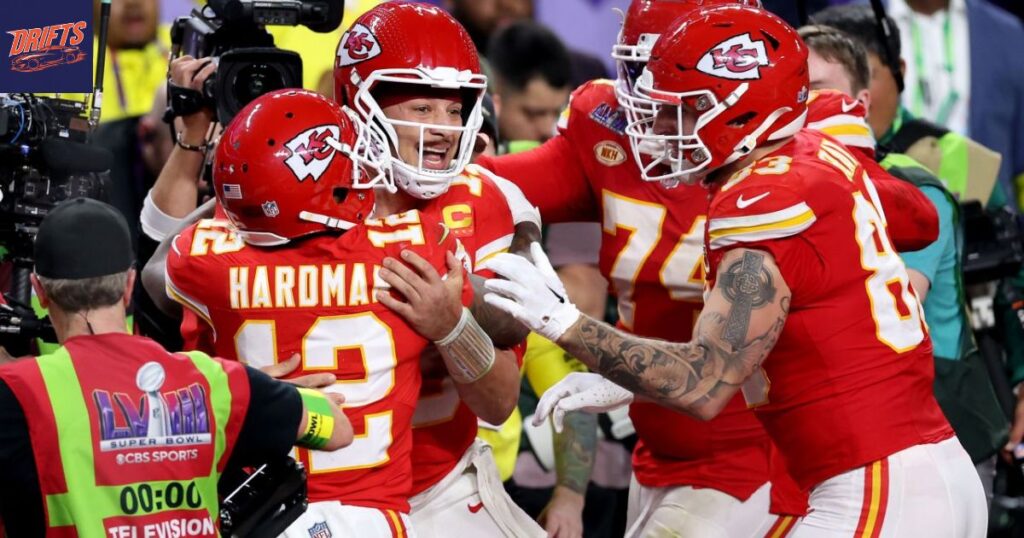The highly anticipated matchup between the San Francisco 49ers and the Kansas City Chiefs lived up to expectations, delivering a thrilling game filled with strategic plays, outstanding individual performances, and dramatic moments.
This comprehensive analysis delves into the key aspects of the game, highlighting player statistics, tactical decisions, and pivotal plays that shaped the outcome.
A Closer Look at the High-Stakes Faceoff: San Francisco 49ers vs. Kansas City Chiefs Player Stats
The clash between these two NFL powerhouses was more than just another regular-season game. Both teams entered the contest with playoff implications on the line, adding an extra layer of intensity to an already highly anticipated matchup.
Pre-Game Expectations
- The 49ers came in with a strong running game and a formidable defense.
- The Chiefs relied on their explosive offense led by quarterback Patrick Mahomes.
- Both teams boasted impressive records and were considered top contenders in their respective conferences.
- Fans and analysts alike expected a close, high-scoring affair between two well-matched teams.
In-Depth Game Analysis

The In-Depth Game Analysis of the 49ers vs Kansas City Chiefs match provided a comprehensive look at the ebb and flow of this high-stakes encounter. The game unfolded over four intense quarters and an overtime period, each marked by distinct strategic approaches and pivotal moments.
In the first quarter, both teams started cautiously, feeling out their opponents’ strategies. The 49ers relied on their strong running game, while the Chiefs looked to establish their passing attack.
The second quarter saw an uptick in offensive production, with both teams finding the end zone and adjusting their tactics to exploit perceived weaknesses in their opponents’ defenses.
First Quarter: Strategic Beginnings and Key Moves
The game opened with both teams feeling each other out, employing conservative strategies to avoid early mistakes.
Key statistics from the first quarter include:
- Total yards: 49ers – 78, Chiefs – 65
- Time of possession: 49ers – 8:12, Chiefs – 6:48
- Key play: 49ers’ George Kittle’s 22-yard reception on third down, extending their opening drive
Second Quarter: Shifting Dynamics and Strategic Adjustments
The second quarter saw an increase in offensive production as both teams found their rhythm.
Notable events include:
- Chiefs’ Tyreek Hill’s 35-yard touchdown reception
- 49ers’ Raheem Mostert’s 18-yard touchdown run
- Halftime score: Chiefs 14, 49ers 10
Halftime Review: Strategic Insights and Adjustments
Both coaching staffs used the halftime break to analyze first-half performance and make crucial adjustments.
Key focus areas included:
- 49ers: Improving pass protection and utilizing more play-action passes
- Chiefs: Enhancing run defense and increasing pressure on Jimmy Garoppolo
Third Quarter: A Defensive Battle Intensifies
The third quarter was characterized by strong defensive performances from both teams. Highlights include:
- 49ers’ Nick Bosa recording two sacks
- Chiefs’ Tyrann Mathieu’s crucial pass breakup in the end zone
- Total points scored in the quarter: 49ers 3, Chiefs 3
Fourth Quarter: High-Stakes Finale
The final quarter saw both teams trading blows in a tense battle for victory.
Key moments include:
- 49ers taking the lead with a George Kittle touchdown reception (3:24 remaining)
- Chiefs responding with a Harrison Butker 48-yard field goal (0:37 remaining)
- Regulation time ending in a 24-24 tie
Overtime Drama: A Battle of Endurance and Determination
The game extended into overtime, where both teams showcased their resilience and determination. The decisive play came when Patrick Mahomes connected with Travis Kelce for a game-winning 25-yard touchdown, securing a 30-24 victory for the Chiefs.
Outstanding Player Contributions

Outstanding Player Contributions recognize exceptional athletes who significantly impact their teams and sports. These individuals demonstrate remarkable skill, leadership, and commitment, often breaking records, inspiring teammates, and elevating the overall level of play in their respective disciplines.
Read This Blog: Remembering Albert Ezerzer: Age, Bio, Career, Movies, Passing and More
Jimmy Garoppolo: Key Offensive Playmaker
Garoppolo’s performance was crucial to the 49ers’ offensive success:
- Completed 26 of 38 passes (68.4% completion rate)
- 315 passing yards
- 2 touchdowns, 1 interception
- Passer rating: 101.2
Patrick Mahomes: Dynamic Playmaking
Mahomes once again demonstrated why he’s considered one of the NFL’s elite quarterbacks:
- Completed 29 of 42 passes (69% completion rate)
- 378 passing yards
- 3 touchdowns, 0 interceptions
- Passer rating: 121.5
- 22 rushing yards on 4 attempts
Defensive Stars
Several defensive players made significant impacts on the game:
- 49ers’ Nick Bosa: 3 sacks, 5 quarterback hits, 1 forced fumble
- Chiefs’ Chris Jones: 2 sacks, 3 tackles for loss, 1 pass deflection
- 49ers’ Fred Warner: 12 tackles, 1 interception
- Chiefs’ Tyrann Mathieu: 8 tackles, 2 pass breakups, 1 forced fumble
Coaching Tactics and Adjustments

Coaching tactics and adjustments involve adapting strategies mid-game based on opponent actions and team performance. Effective coaches analyze player strengths, opponent weaknesses, and game flow to make timely decisions on substitutions, formations, and play-calling to maximize team success.
Kyle Shanahan’s Offensive Strategy
Shanahan’s game plan focused on:
- Establishing the run to set up play-action passes
- Utilizing pre-snap motion to create mismatches
- Quick passes to neutralize the Chiefs’ pass rush
Andy Reid’s Strategic Adaptations
Reid’s adjustments throughout the game included:
- Increased use of screen passes to slow down the 49ers’ pass rush
- More designed quarterback runs to take advantage of Mahomes’ mobility
- Aggressive fourth-down play-calling in crucial situations
In-depth Player Analysis and Performance Insights

Player analysis and performance insights utilize advanced statistics, video analysis, and biometric data to evaluate athletes’ skills, tactics, and physical condition. This comprehensive approach helps teams and coaches make data-driven decisions for training, strategy, and player development.
Offensive Standouts
- George Kittle (49ers): 9 receptions, 112 yards, 1 touchdown
- Travis Kelce (Chiefs): 8 receptions, 98 yards, 1 touchdown
- Raheem Mostert (49ers): 87 rushing yards, 1 touchdown
- Tyreek Hill (Chiefs): 7 receptions, 135 yards, 1 touchdown
Defensive Playmakers
- DeForest Buckner (49ers): 6 tackles, 1 sack, 2 quarterback hits
- Frank Clark (Chiefs): 4 tackles, 1 sack, 3 quarterback hits
- Richard Sherman (49ers): 5 tackles, 2 pass breakups
- Daniel Sorensen (Chiefs): 9 tackles, 1 forced fumble
Special Teams Contributions
- Robbie Gould (49ers): 3/3 field goals, long of 47 yards
- Harrison Butker (Chiefs): 3/3 field goals, long of 48 yards
- Mitch Wishnowsky (49ers): 4 punts, 48.5-yard average
- Tommy Townsend (Chiefs): 3 punts, 45.7-yard average
Post-Game Reflections and Detailed Analysis

Post-game reflections and detailed analysis involve examining a game’s key moments, player performances, and strategic decisions. This process helps teams and analysts understand what worked, what didn’t, and how to improve for future matches.
Coaches’ Perspectives
- Kyle Shanahan praised his team’s resilience but acknowledged missed opportunities in the red zone.
- Andy Reid commended the 49ers’ tough defense and highlighted his team’s ability to make crucial plays in overtime.
Player Reactions
- Jimmy Garoppolo expressed disappointment but remained optimistic about the team’s future prospects.
- Patrick Mahomes credited his offensive line and receivers for their support in the clutch moments.
Media Analysis
- Many analysts pointed to the Chiefs’ big-play ability as the deciding factor in the game.
- The 49ers’ defensive performance, particularly in the second half, received widespread praise despite the loss.
Read This Blog: Jeffrey Charles Tarpley Jr.: A Life of Perseverance and Love
In-Depth Comparative Performance Analysis

An in-depth comparative performance analysis systematically evaluates multiple systems, products, or processes against predetermined metrics. It identifies strengths, weaknesses, and opportunities for improvement, providing valuable insights for decision-making and optimization efforts across various domains.
Offensive Comparison
- Total yards: Chiefs 456, 49ers 402
- Passing yards: Chiefs 378, 49ers 315
- Rushing yards: 49ers 87, Chiefs 78
- Third-down efficiency: Chiefs 50% (7/14), 49ers 46% (6/13)
Defensive Comparison
- Sacks: 49ers 3, Chiefs 2
- Interceptions: 49ers 1, Chiefs 1
- Forced fumbles: Chiefs 2, 49ers 1
- Total tackles: 49ers 68, Chiefs 65
Key Performance Indicators
- Red zone efficiency: Chiefs 75% (3/4), 49ers 50% (2/4)
- Time of possession: 49ers 32:18, Chiefs 31:42
- Turnover ratio: Chiefs +1
- Penalties: 49ers 5 for 45 yards, Chiefs 4 for 30 yards
FAQ’s
What was the final score of the 49ers vs Chiefs game?
The Kansas City Chiefs defeated the San Francisco 49ers 30-24 in overtime.
Who were the top performers for each team?
For the Chiefs, Patrick Mahomes (378 passing yards, 3 TDs) and Tyreek Hill (135 receiving yards, 1 TD). For the 49ers, Jimmy Garoppolo (315 passing yards, 2 TDs) and George Kittle (112 receiving yards, 1 TD).
How did overtime unfold?
The Chiefs received the ball first in overtime and drove down the field, winning the game on a 25-yard touchdown pass from Mahomes to Travis Kelce.
What were the key statistics that defined the game?
Total yards (Chiefs 456, 49ers 402), third-down efficiency (Chiefs 50%, 49ers 46%), and red zone efficiency (Chiefs 75%, 49ers 50%) were crucial factors.
How did the coaches’ strategies impact the game?
Both Kyle Shanahan and Andy Reid made important halftime adjustments. Shanahan focused on utilizing play-action passes, while Reid emphasized quicker passes to counteract the 49ers’ pass rush.
Summary
The thrilling matchup between the San Francisco 49ers and the Kansas City Chiefs delivered a captivating showcase of football skill and strategy. The game, marked by its intense competition, saw the 49ers make a strong start with quarterback Jimmy Garoppolo leading a precise offensive attack.
As the game progressed, the Chiefs, led by quarterback Patrick Mahomes, began to assert control with dynamic plays and accurate throws, leading to a high-scoring and closely contested second quarter.
At halftime, both teams made critical adjustments to their strategies, setting the stage for a defensive struggle in the third quarter. The Chiefs’ defense, led by Chris Jones, effectively disrupted Garoppolo’s rhythm, while the 49ers’ defense, featuring Nick Bosa, sought to contain Mahomes.

Hello!
I’m Areej, a passionate blogger with 5 years of experience. I love writing about tech, fashion, business, and health. My goal is to share useful information and insights with you. Explore my website to discover exciting content on various topics!












